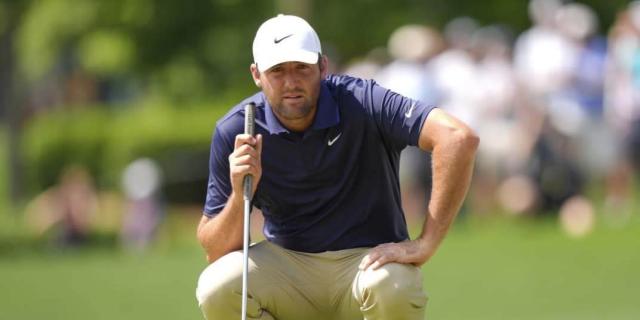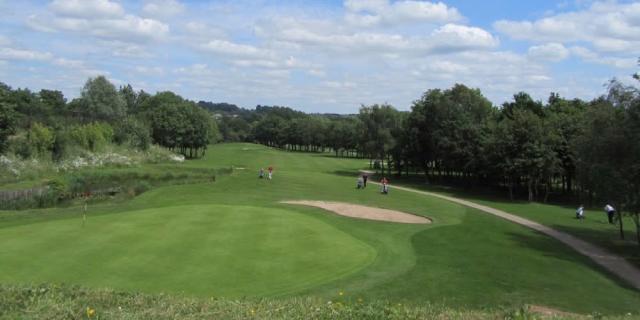
Are You Making These 3 Golf Fitness Mistakes? Here's How to Fix Them
TPI-certified personal trainer and biomechanics coach, Jon Hodgkinson explains three common golf fitness mistakes that many people make - and how you can go about fixing them.
Every golfer wants to hit the ball further, stay pain-free, and play for as many years as possible.
But too many golfers unknowingly make fitness mistakes that limit performance and increase injury risk.
In this article, we’ll cover the three biggest fitness mistakes golfers make and what you should do instead to improve your game, increase your clubhead speed, and stay injury-free.
Featured Content

Mistake #1: Neglecting Mobility
Mobility is the foundation of a full, efficient golf swing.
The problem?
It naturally declines with age - unless you work to maintain it. This is why so many older golfers lose distance, become more inconsistent, and experience more injuries.
Research on PGA Tour players found that hip and thoracic rotation are two of the biggest physical contributors to clubhead speed. When these areas tighten up, your swing becomes shorter and less powerful, forcing your body to compensate in inefficient (and sometimes painful) ways. Over time, this can lead to swing faults, inconsistency, and even injuries like lower back pain.
The good news?
Mobility isn’t something you just lose forever - it can be regained with the right exercises. Unlike strength, which takes time to develop, mobility can often be improved quickly, making it the lowest-hanging fruit for most golfers looking to regain lost distance.
How to Fix It:
Incorporate mobility drills before every round and in your weekly routine.
Focus on hip and thoracic spine rotation, as these areas most directly impact your swing.
Start with simple, effective drills like kickstance rotations, 90/90 transitions, and thoracic openers. Just 5-10 minutes, a few times per week, can make a huge difference.
Want a simple way to maintain mobility? Check out our 5-minute golf warm-up.
Mistake #2: Jumping Straight Into Overspeed Training
Many golfers looking for quick speed gains grab a set of speed sticks and start swinging harder, thinking it will immediately add yards to their drives.
While overspeed training can be effective, jumping straight into it without the right physical foundation is a recipe for injury.
Here’s the problem: Overspeed training increases swing velocity, but if your body lacks the strength and stability to handle those forces, you’re putting excessive stress on your joints, tendons, and ligaments.
A study on ground reaction forces found that elite golfers generate significantly more vertical force through the lead leg compared to amateurs. This force is essential for generating clubhead speed - but it comes from strong, stable legs and a solid core, not just swinging faster.
Overspeed training is like slapping a turbocharger on a weak engine. Without the strength to handle it, something is bound to break.
How to Fix It:
Build a foundation of strength and stability first, particularly in your legs and core.
Prioritise lower-body explosiveness (e.g., squat jumps, speed skaters) and rotational power (e.g., med ball slams) before introducing speed training.
When you do start overspeed training, integrate it gradually, ensuring your body can handle the increased forces.
Looking for a safe way to build power? Start with The 5 Best Exercises for Speed & Power in Golf.
Mistake #3: Stopping Training When the Season Starts
A common mistake among golfers is training hard through the winter, only to stop completely when the season starts.
On the surface, this makes sense - you’re playing more, and you don’t want to overdo it. But here’s the problem:
If you stop training, you quickly lose strength, power, and mobility - all the things that helped you swing better in the first place.
Strength and power fade faster than you think. Research shows that muscle power can decline within just a few weeks of stopping strength training. The result? Clubhead speed drops, distance declines, and your body becomes more susceptible to fatigue and injury.
One of the biggest myths in golf? Thinking that playing alone keeps you fit.
While playing helps with skill and endurance, it doesn’t build strength, improve mobility, or develop power - all of which are essential for staying at the top of your game.
This is why so many golfers start the season feeling great but struggle with aches, pains, and inconsistency by mid-season. Without strength training to reinforce your body against repetitive stress, common injuries like lower back pain, elbow issues, and shoulder problems become far more likely.
How to Fix It:
Maintain a basic in-season training routine. You don’t need to be in the gym every day - even just a couple of quality sessions per week can make a huge difference.
Prioritise maintenance over gains. The goal during the season isn’t to set personal records in the gym - it’s to keep your body strong, mobile, and resilient so you can perform at your best all year.
Think of training as injury prevention. A small amount of consistent work keeps your body primed for performance and dramatically reduces the risk of mid-season breakdowns.
Want some of the best exercises for maintaining your strength? Try The 10 Best Golf Exercises with Dumbbells.
Final Thoughts
If you want to play your best golf for as long as possible, avoiding these mistakes is key.
Neglecting mobility will cause you to lose distance, force inefficient swing compensations, and increase your risk of injury.
Jumping straight into overspeed training without a strong foundation will stress your joints and lead to setbacks rather than progress.
And if you stop training once the season starts, you’ll quickly undo all the gains you worked hard to build in the off-season.
The good news?
These mistakes are easy to fix. With a small investment of time into mobility, strength, and smart training, you can hit the ball further, stay pain-free, and enjoy the game for years to come.
Related Content
Improve Your Game With New Golfshake Fitness & Training Coach
5 Simple Golf Exercises to Protect Your Back
5 Best Dumbbell Exercises For Senior Golfers
The 5-Minute Golf Warm-Up Routine You Should Be Doing
The 5 Best Exercises For Speed & Power in Golf
About Jon

Jon Hodgkinson is a TPI-certified personal trainer and biomechanics coach with more than a decade of hands-on coaching experience. Working with clients both online and in-person at their private golf fitness facility, Jon and his team specialise in helping golfers play better, for longer. Visit their website here: Jon Hodgkinson Golf Fitness.
Tags: GOLFERS golf fitness Golf Fitness daily picks









